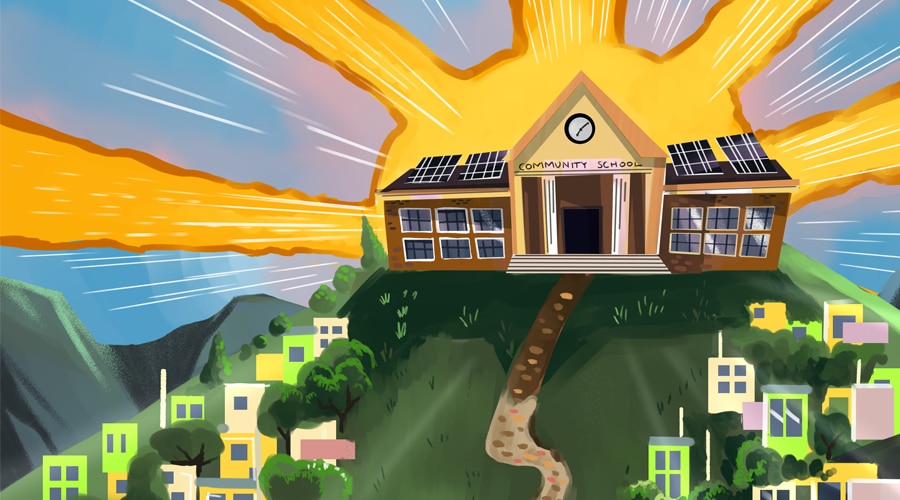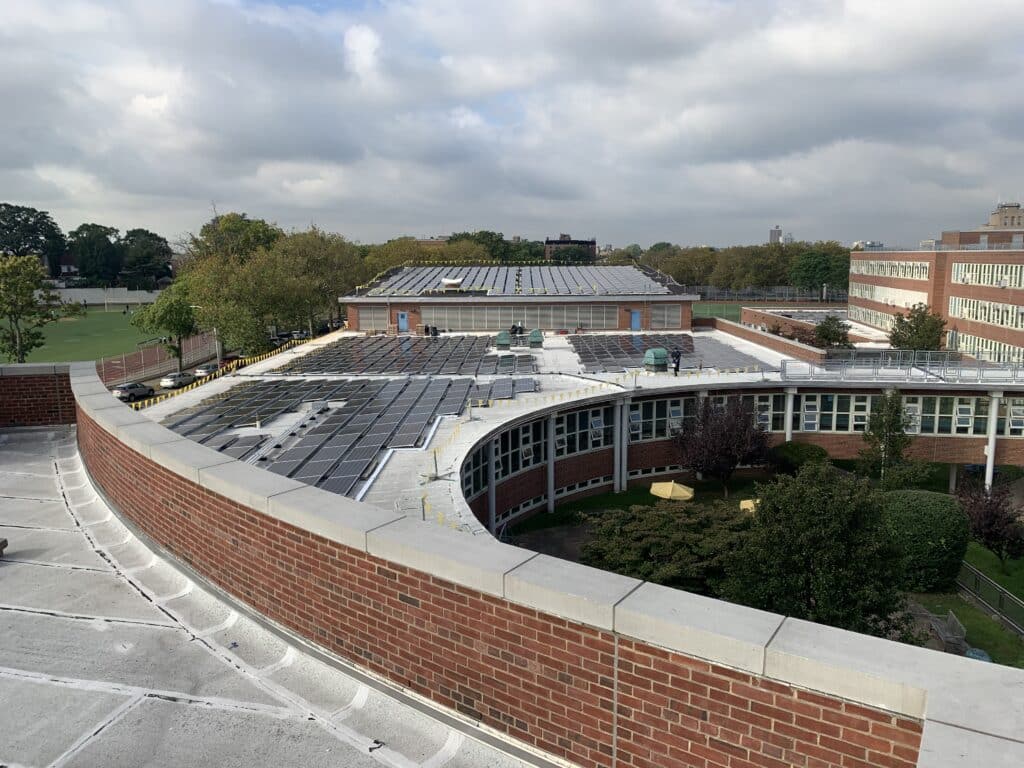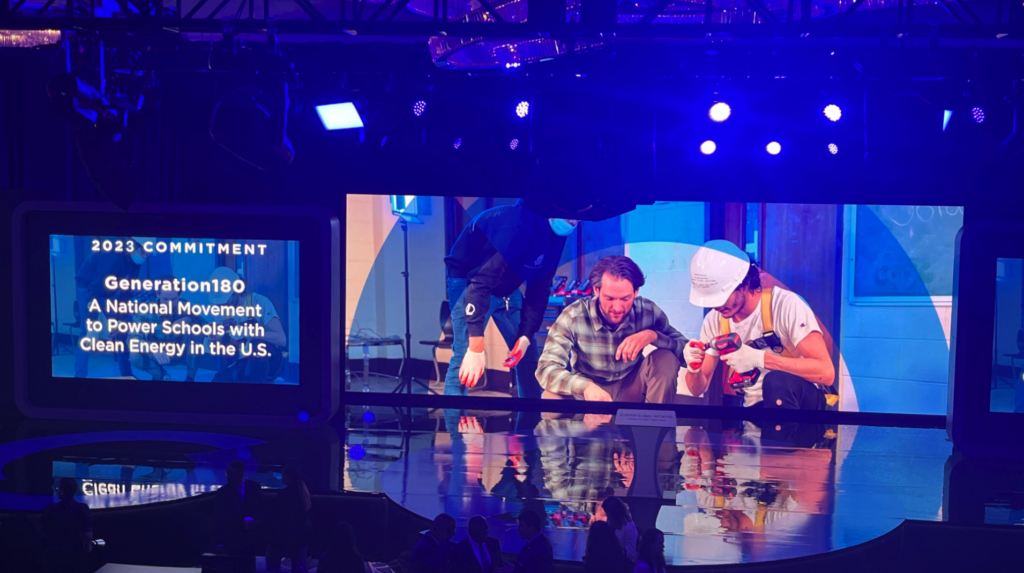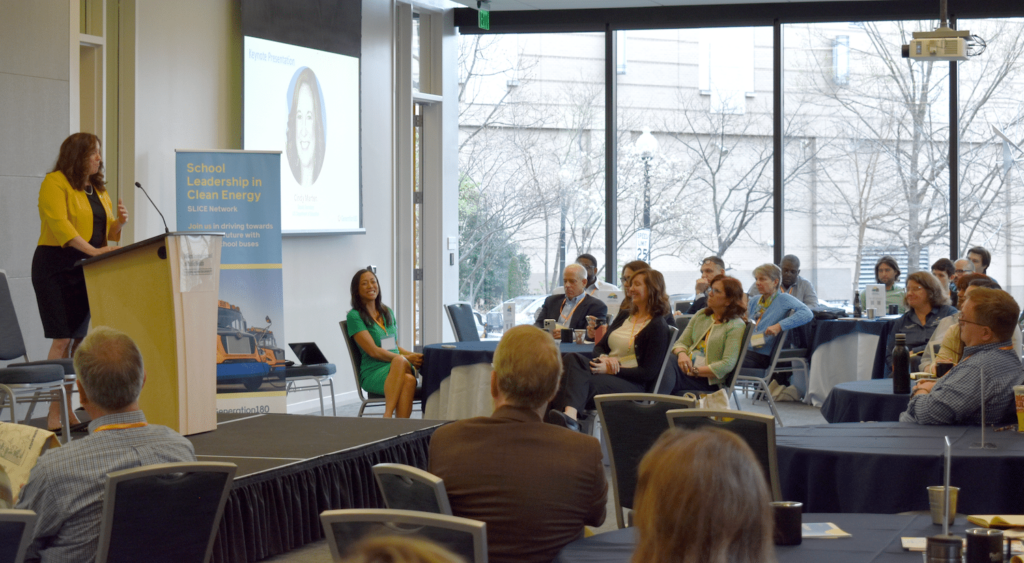Ready for a bright spot in an otherwise dreary news cycle? Across the U.S., more than 7,300 K-12 schools now rely on clean solar energy to power their operations. That’s up 81 percent from just five years ago, and represents 5.5 percent of all elementary and secondary schools in the country, according to the latest edition of Generation180’s Brighter Future: A Study on Solar in U.S. Schools, released this week. Despite this promising growth, however, so many more schools could benefit both financially and educationally from harnessing the power of the sun.
Importantly, going solar isn’t just for well-endowed communities or school districts. As districts struggle to adapt to a nationwide budget crisis brought on by the COVID-19 pandemic, K-12 schools of all types are shoring up their finances with a switch to solar power, which usually involves minimal to no upfront capital costs. According to the report, 79 percent of the solar installed on schools was financed by a third party—such as a solar developer—who funds, builds, owns, and maintains the system. This allows schools and districts, regardless of their budget size, to purchase solar energy and receive immediate energy cost savings. Power purchase agreements, or PPAs, are a popular third-party arrangement currently available in 28 states and the District of Columbia.
Going solar is a long-term win-win, not a money sink. Energy costs are the second largest expense for U.S. schools after personnel, and school districts can save significantly on these costs over time. For example, Tucson Unified School District in Arizona expects to save $43 million over 20 years, and in Arkansas, the Batesville School District used energy savings to become the highest-paying school district in the county, with teachers receiving up to $9,000 per year in raises.
Schools are also capitalizing on solar projects to reap educational benefits, including providing students with hands-on STEM learning opportunities (as in Michigan), job training, and internships for solar careers. In addition, schools with solar and battery storage can serve as emergency shelters and provide backup power during grid outages, which not only prevents classroom disruptions but also serves as a vital resource for communities. “At a time when the global pandemic and climate change bring emergency preparedness into sharp focus, schools with solar and storage can become centers of community resilience that provide vital support during natural disasters,” said Andrea Luecke, president and executive director at The Solar Foundation.
California is the nation’s solar school leader—home to a third of all sun-powered schools and to 45% of the installed solar capacity—followed by New Jersey, Arizona, and Massachusetts. But the three fastest growing states for installed solar capacity on schools are Indiana, Virginia (see examples here and here), and Illinois, suggesting that the Midwest is increasingly benefiting from the clean energy revolution. Only one US state, South Dakota, has no solar schools. In some states, solar schools account for a large share of the total, representing nearly a third (29 percent) of all schools in Hawaii, nearly a quarter (23 percent) in the District of Columbia and a fifth (20 percent) in Nevada.
Even though millions of kids aren’t physically entering classrooms this fall, the number of students who attend a solar school has risen to a whopping 5.3 million, nearly double the number in 2014, when the first edition of Brighter Future came out. But with a total of 56.5 million K-12 students nationwide, we still have a ways to go. For most public schools, the decision to go solar is made at the district level, pointing to the importance of involving key local champions, including superintendents, facilities managers, and school boards, as well as parents and students. Already, around 16% of K-12 school districts across the country (2,231 in total) have embraced solar, often inspired by community-led campaigns. (Check out Generation 180’s “How-to Guide” and other resources to get your district moving on solar schools.)
The federal government also needs to step up by including clean energy funding for schools in national economic recovery and disaster relief plans. “As we think of ways we can rebuild better, helping schools make the switch to solar + storage can uplift our communities, drive our stalled economy, and insulate our schools from the effects of climate change,” said Abigail Ross Hopper, president and CEO of SEIA. “It’s rare to find a solution that can solve many challenges at once, and we hope Congress will recognize that solar can also play a vital role in our communities.”
Want to learn more about solar schools? Check out the Brighter Future report webpage, which includes an interactive map of solar schools across the nation, along with other resources to help school districts go solar.
Originally published in the 9/16/20 edition of our Flip the Script newsletter















